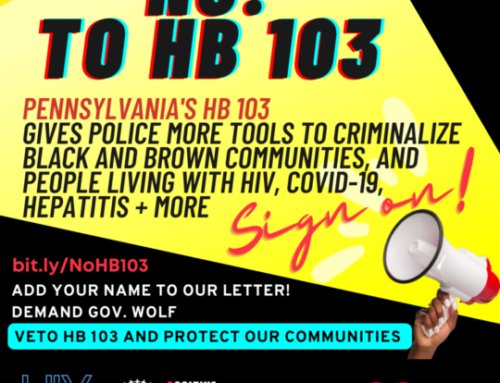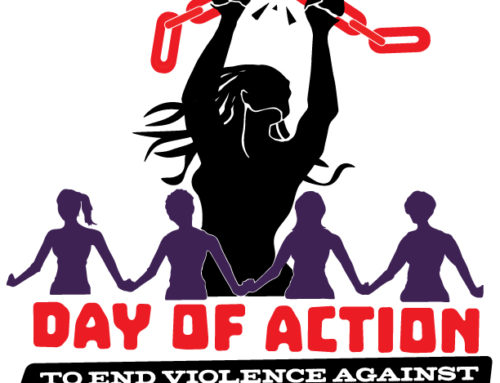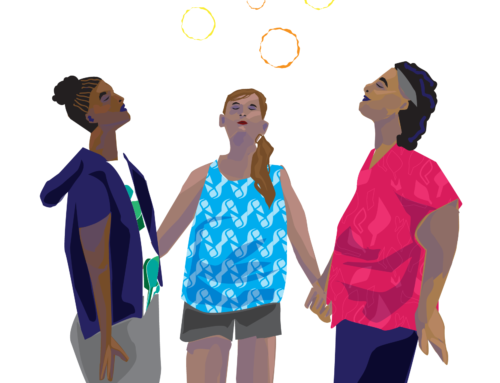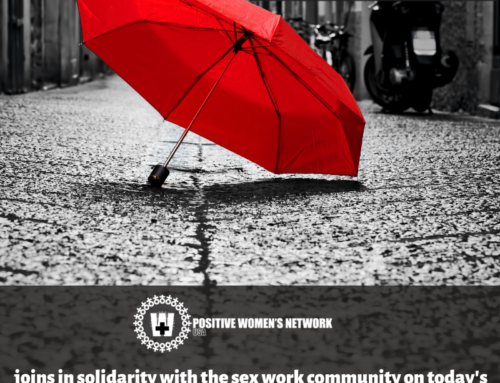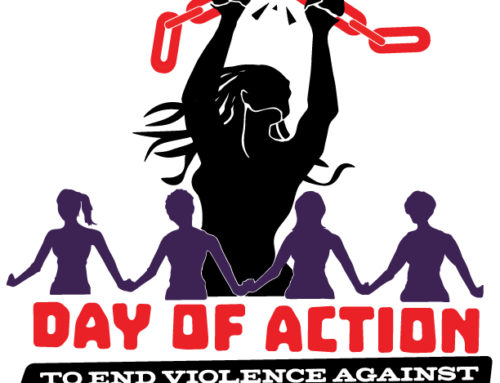What’s the Link between Intimate Partner Violence and HIV?
by Kat Griffith

I am extremely honored to be asked to sit on a national committee that created a curriculum for teaching providers about the intersection between Intimate Partner Violence and HIV on behalf of PWN-USA. Now, that is a mouthful, and I have had some very interesting responses to that statement, including “Is there an intersection? How does violence relate to HIV?”
Let’s face it, both are public health problems and neither is engaging dinner table conversation. Sitting on this committee, I have learned so much, both from fellow HIV/AIDS advocates, but more importantly from people who work in various aspects of the gender based violence fields. I have learned about the structure of organizations, I have learned about how women’s shelters may, or more likely, may not honor a woman’s right to privacy and confidentiality, and I have learned some of the places where people within each field do not agree with each other!
More importantly, I am learning that while violence against women is a HUGE problem within the HIV community, with extremely clear links between violence and transmission, I am horrified that nobody talks about it! So I started digging a little bit.
In 2010, the World Health Organization released a document, which states
“over a decade of research from countries in different regions of the world documents an undeniable link between violence against women (VAW) and HIV infection. The relationship between VAW and HIV risk is complex, and involves multiple pathways, in which violence serves both as a driver of the epidemic, and at times a consequence of being HIV positive.”
Many people view the intersection only as a direct link… for instance in a recently released report by University of Pennsylvania, it was found that, “The relationship between HIV and partner abuse is significant:
In the U.S., at least 12% of HIV infections among women are a result of partner abuse.” Think about that number… that is HUGE. That does not include women who have been raped, sexually assaulted, physically abused or controlled by intimate partners and/or strangers who are now HIV-positive. And I am left wondering, who will sponsor THAT study? It also does not speak to the women who experience violence due to disclosure of their HIV status. I want more data!
You might be asking yourself, why does this matter? To me, it is personal, and I will get into that in a minute, but back to that WHO report, where it is pointed out that the BIGGEST link occurs in longer lasting exposure to violence and it’s effect on women’s choices and decisions.
Let’s face it, if you are worried about your safety, you are NOT having conversations about safer sex practices. Women’s lives are complex, and the links between violence and HIV transmission run deep. It is important because this link can inform our research and prevention messages! And it is important because NOW I look at a risk assessment (you know, the little sheet of questions you have to answer to get tested for HIV) there is NO mention of violence, even though a clear risk has been established.
In that same WHO report, one recommendation was: “The United Nations (UN) should support and advocate with young women and men for active HIV prevention that specifically incorporates gender-based violence prevention and gender-equality perspectives.” And as usual, in this country of “equal rights for all,” women are left out of the policy decisions and even our own risk is not recognized! In this age where women’s bodies are political fodder and soundbites, it is important because we MATTER! Without conversation, how can we possibly move on?
I mentioned before that it is personal. Through high school, I was in an abusive relationship. I tend to think of this time of my life as that of a totally different person, but in reality, I was set up. I pulled myself out of that relationship with a LOT of work. I learned about myself, about co-dependency, and women’s needs to make everything ok for everyone else, at a cost to our own health and bodies, and finally, I walked away. I went away to college, fell in love with a great guy, who was unknowingly HIV infected. The point is this. The intersection between violence and HIV sometimes is direct, many times it is not. If a woman becomes accustomed to not valuing her body, her sexuality, and herself, then she is at risk. And that is what happened to me. I knew a little, but I didn’t know enough. Nobody talked about ANY of this, many of us simply had to figure it out as we went. NOW these conversations have started, but as usual we need to speak louder, more clearly, and make sure that people HEAR us. Right now, in today’s political climate, we have a unique opportunity to make our voices heard. We need to make sure that women are COUNTED when these conversations happen…or crash the party. Whatever works.
Resources:
Sexual Violence, Stalking, and Intimate Partner Violence widespread in U.S., CDC Report, Dec 2011
Violence Against Women and HIV/AIDS, World Health Organization
 I am extremely honored to be asked to sit on a national committee that created a curriculum for teaching providers about the intersection between Intimate Partner Violence and HIV on behalf of PWN-USA. Now, that is a mouthful, and I have had some very interesting responses to that statement, including “Is there an intersection? How does violence relate to HIV?”
Let’s face it, both are public health problems and neither is engaging dinner table conversation. Sitting on this committee, I have learned so much, both from fellow HIV/AIDS advocates, but more importantly from people who work in various aspects of the gender based violence fields. I have learned about the structure of organizations, I have learned about how women’s shelters may, or more likely, may not honor a woman’s right to privacy and confidentiality, and I have learned some of the places where people within each field do not agree with each other!
More importantly, I am learning that while violence against women is a HUGE problem within the HIV community, with extremely clear links between violence and transmission, I am horrified that nobody talks about it! So I started digging a little bit.
In 2010, the World Health Organization released a document, which states“over a decade of research from countries in different regions of the world documents an undeniable link between violence against women (VAW) and HIV infection. The relationship between VAW and HIV risk is complex, and involves multiple pathways, in which violence serves both as a driver of the epidemic, and at times a consequence of being HIV positive.”
Many people view the intersection only as a direct link… for instance in a recently released report by University of Pennsylvania, it was found that, “The relationship between HIV and partner abuse is significant: In the U.S., at least 12% of HIV infections among women are a result of partner abuse.” Think about that number… that is HUGE. That does not include women who have been raped, sexually assaulted, physically abused or controlled by intimate partners and/or strangers who are now HIV-positive. And I am left wondering, who will sponsor THAT study? It also does not speak to the women who experience violence due to disclosure of their HIV status. I want more data!
You might be asking yourself, why does this matter? To me, it is personal, and I will get into that in a minute, but back to that WHO report, where it is pointed out that the BIGGEST link occurs in longer lasting exposure to violence and it’s effect on women’s choices and decisions. Let’s face it, if you are worried about your safety, you are NOT having conversations about safer sex practices. Women’s lives are complex, and the links between violence and HIV transmission run deep. It is important because this link can inform our research and prevention messages! And it is important because NOW I look at a risk assessment (you know, the little sheet of questions you have to answer to get tested for HIV) there is NO mention of violence, even though a clear risk has been established.
In that same WHO report, one recommendation was: “The United Nations (UN) should support and advocate with young women and men for active HIV prevention that specifically incorporates gender-based violence prevention and gender-equality perspectives.” And as usual, in this country of “equal rights for all,” women are left out of the policy decisions and even our own risk is not recognized! In this age where women’s bodies are political fodder and soundbites, it is important because we MATTER! Without conversation, how can we possibly move on?
I mentioned before that it is personal. Through high school, I was in an abusive relationship. I tend to think of this time of my life as that of a totally different person, but in reality, I was set up. I pulled myself out of that relationship with a LOT of work. I learned about myself, about co-dependency, and women’s needs to make everything ok for everyone else, at a cost to our own health and bodies, and finally, I walked away. I went away to college, fell in love with a great guy, who was unknowingly HIV infected. The point is this. The intersection between violence and HIV sometimes is direct, many times it is not. If a woman becomes accustomed to not valuing her body, her sexuality, and herself, then she is at risk. And that is what happened to me. I knew a little, but I didn’t know enough. Nobody talked about ANY of this, many of us simply had to figure it out as we went. NOW these conversations have started, but as usual we need to speak louder, more clearly, and make sure that people HEAR us. Right now, in today’s political climate, we have a unique opportunity to make our voices heard. We need to make sure that women are COUNTED when these conversations happen…or crash the party. Whatever works.
Resources:
Sexual Violence, Stalking, and Intimate Partner Violence widespread in U.S., CDC Report, Dec 2011
Violence Against Women and HIV/AIDS, World Health Organization
I am extremely honored to be asked to sit on a national committee that created a curriculum for teaching providers about the intersection between Intimate Partner Violence and HIV on behalf of PWN-USA. Now, that is a mouthful, and I have had some very interesting responses to that statement, including “Is there an intersection? How does violence relate to HIV?”
Let’s face it, both are public health problems and neither is engaging dinner table conversation. Sitting on this committee, I have learned so much, both from fellow HIV/AIDS advocates, but more importantly from people who work in various aspects of the gender based violence fields. I have learned about the structure of organizations, I have learned about how women’s shelters may, or more likely, may not honor a woman’s right to privacy and confidentiality, and I have learned some of the places where people within each field do not agree with each other!
More importantly, I am learning that while violence against women is a HUGE problem within the HIV community, with extremely clear links between violence and transmission, I am horrified that nobody talks about it! So I started digging a little bit.
In 2010, the World Health Organization released a document, which states“over a decade of research from countries in different regions of the world documents an undeniable link between violence against women (VAW) and HIV infection. The relationship between VAW and HIV risk is complex, and involves multiple pathways, in which violence serves both as a driver of the epidemic, and at times a consequence of being HIV positive.”
Many people view the intersection only as a direct link… for instance in a recently released report by University of Pennsylvania, it was found that, “The relationship between HIV and partner abuse is significant: In the U.S., at least 12% of HIV infections among women are a result of partner abuse.” Think about that number… that is HUGE. That does not include women who have been raped, sexually assaulted, physically abused or controlled by intimate partners and/or strangers who are now HIV-positive. And I am left wondering, who will sponsor THAT study? It also does not speak to the women who experience violence due to disclosure of their HIV status. I want more data!
You might be asking yourself, why does this matter? To me, it is personal, and I will get into that in a minute, but back to that WHO report, where it is pointed out that the BIGGEST link occurs in longer lasting exposure to violence and it’s effect on women’s choices and decisions. Let’s face it, if you are worried about your safety, you are NOT having conversations about safer sex practices. Women’s lives are complex, and the links between violence and HIV transmission run deep. It is important because this link can inform our research and prevention messages! And it is important because NOW I look at a risk assessment (you know, the little sheet of questions you have to answer to get tested for HIV) there is NO mention of violence, even though a clear risk has been established.
In that same WHO report, one recommendation was: “The United Nations (UN) should support and advocate with young women and men for active HIV prevention that specifically incorporates gender-based violence prevention and gender-equality perspectives.” And as usual, in this country of “equal rights for all,” women are left out of the policy decisions and even our own risk is not recognized! In this age where women’s bodies are political fodder and soundbites, it is important because we MATTER! Without conversation, how can we possibly move on?
I mentioned before that it is personal. Through high school, I was in an abusive relationship. I tend to think of this time of my life as that of a totally different person, but in reality, I was set up. I pulled myself out of that relationship with a LOT of work. I learned about myself, about co-dependency, and women’s needs to make everything ok for everyone else, at a cost to our own health and bodies, and finally, I walked away. I went away to college, fell in love with a great guy, who was unknowingly HIV infected. The point is this. The intersection between violence and HIV sometimes is direct, many times it is not. If a woman becomes accustomed to not valuing her body, her sexuality, and herself, then she is at risk. And that is what happened to me. I knew a little, but I didn’t know enough. Nobody talked about ANY of this, many of us simply had to figure it out as we went. NOW these conversations have started, but as usual we need to speak louder, more clearly, and make sure that people HEAR us. Right now, in today’s political climate, we have a unique opportunity to make our voices heard. We need to make sure that women are COUNTED when these conversations happen…or crash the party. Whatever works.
Resources:
Sexual Violence, Stalking, and Intimate Partner Violence widespread in U.S., CDC Report, Dec 2011
Violence Against Women and HIV/AIDS, World Health Organization 


